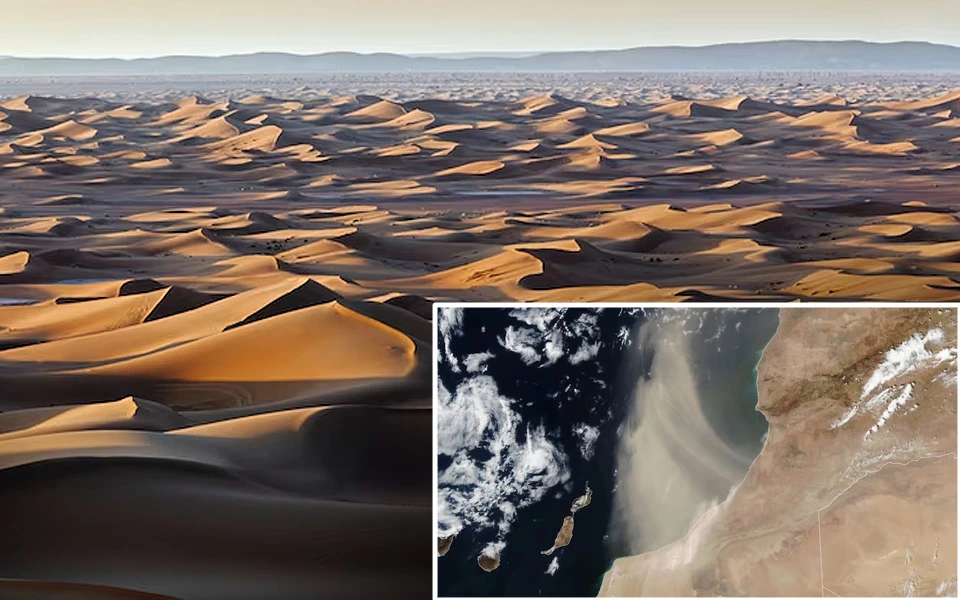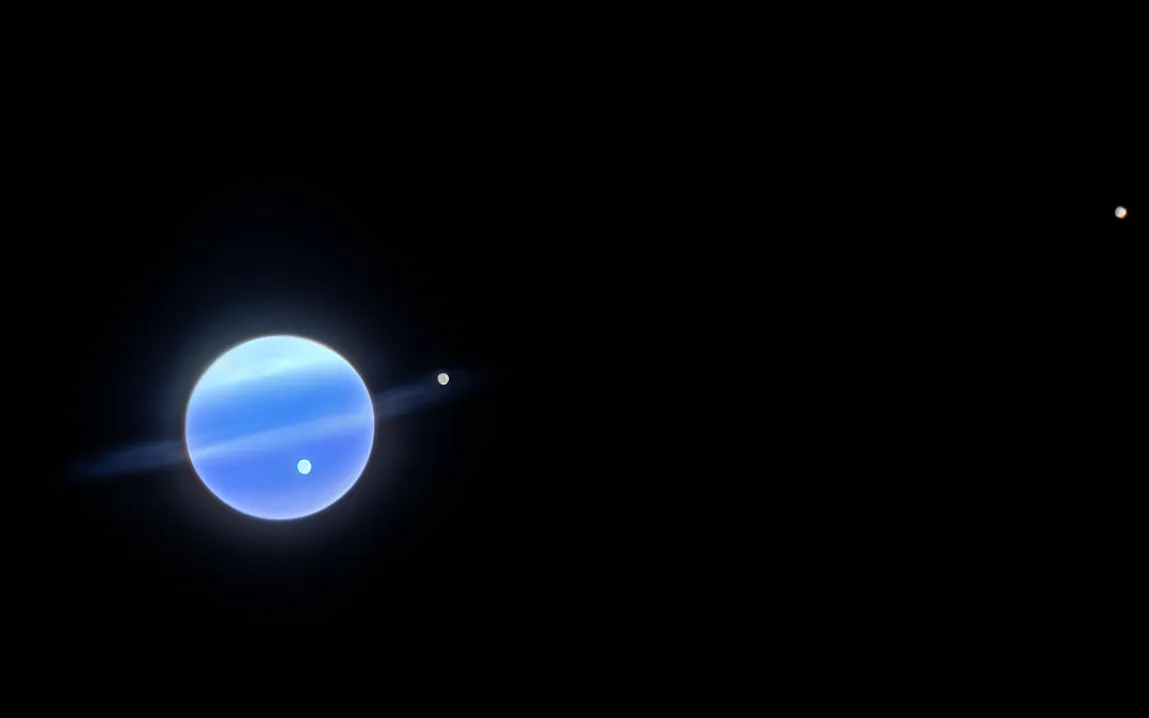Saharan dust carries iron that enhances oceanic ecosystems and global climate regulation, fueling marine life across vast distances by boosting nutrient availability.
Introduction: A Desert’s Gift to the Oceans
In an astonishing ecological phenomenon, Saharan dust carried by winds over thousands of kilometers is enriching marine ecosystems and enhancing the productivity of life in the oceans. This dust, rich in iron, provides a critical nutrient that sustains phytoplankton growth, a foundational element in marine food chains. A new study, published in *Frontiers in Marine Science* and co-authored by Dr. Jeremy Owens of Florida State University, reveals that iron within Saharan dust undergoes chemical transformations during its transatlantic journey, becoming more bioreactive as it travels. These transformations have significant implications for global climate, oceanic ecosystems, and the terrestrial regions receiving this dust.
The story of how windblown dust from the Sahara nourishes distant ecosystems offers a glimpse into the interconnectedness of Earth’s systems, demonstrating how atmospheric processes link continents and oceans in surprising ways.
The Critical Role of Iron in Ocean Ecosystems
Iron is a micronutrient essential for life on Earth. It plays a vital role in processes like respiration, photosynthesis, and DNA synthesis. However, despite its abundance in Earth’s crust, iron’s availability in oceans is often limited, particularly in forms that organisms can easily absorb. This shortage of bioavailable iron restricts the growth of phytoplankton, microscopic plants that form the base of oceanic food chains. These tiny organisms are also crucial players in the global carbon cycle, as they absorb significant amounts of atmospheric carbon dioxide during photosynthesis.
Understanding how iron enters the ocean and becomes available to life is key to predicting how marine ecosystems might respond to changing environmental conditions. While iron can enter oceans through rivers, glaciers, and hydrothermal vents, wind-borne dust, particularly from deserts like the Sahara, has been identified as a major contributor to iron deposits in marine environments. But not all forms of iron are created equal—only “bioreactive” forms can be taken up by marine organisms.
Iron on the Wind: A Journey Across the Atlantic
The new research by Dr. Owens and his colleagues sheds light on the journey of Saharan dust and the transformations it undergoes as it is transported across the Atlantic Ocean. The team focused on understanding how iron’s bioreactivity changes during its long-distance journey, a process that has significant implications for marine life far from its origin in Africa.
“Here we show that iron bound to dust from the Sahara blown westward over the Atlantic has properties that change with the distance traveled: the greater this distance, the more bioreactive the iron,” said Dr. Owens, co-author of the study. This key finding suggests that chemical reactions in the atmosphere make iron more accessible to marine life as the dust travels further from its source.
The researchers analyzed drill cores from the bottom of the Atlantic Ocean, collected as part of the International Ocean Discovery Program (IODP). These sediment cores provided a record of iron deposition over the last 120,000 years, reflecting how dust from the Sahara has influenced oceanic conditions through multiple climate cycles.
The Role of the Sahara-Sahel Dust Corridor
The study examined four sediment cores taken from locations at increasing distances from the Sahara-Sahel Dust Corridor, a region known for generating massive dust storms that blow westward over the Atlantic. The two closest cores were taken approximately 200 km and 500 km off the coast of Mauritania, while the third was located in the mid-Atlantic, and the fourth about 500 km east of Florida. By comparing the iron content in these cores, the researchers could assess how the dust’s properties changed as it moved westward.
The scientists measured both total iron concentrations and the specific forms of iron present in the sediments. They found that as the dust traveled further from the Sahara, the proportion of bioreactive iron increased. This means that iron was becoming more available for uptake by marine organisms the longer it remained in the atmosphere.
“Our results suggest that during long-distance atmospheric transport, the mineral properties of originally non-bioreactive dust-bound iron change, making it more bioreactive,” explained Dr. Timothy Lyons, a professor at the University of California at Riverside and the study’s final author. This transformation likely occurs due to chemical reactions in the atmosphere that break down the iron minerals into forms that are more soluble in seawater.
Impact on Phytoplankton and Ocean Health
The implications of this study are profound. Phytoplankton, the microscopic organisms that form the foundation of marine food webs, rely on iron for photosynthesis. By stimulating phytoplankton growth, iron-rich dust can enhance the productivity of entire ocean ecosystems. As phytoplankton absorb carbon dioxide during photosynthesis, this process also has a direct impact on global climate regulation.
The study’s findings suggest that the dust reaching faraway regions like the Amazon basin and the Bahamas contains particularly soluble and bioreactive iron. This iron fuels the growth of phytoplankton in regions that might otherwise experience nutrient shortages, boosting the overall productivity of these ecosystems. According to Dr. Lyons, “The transported iron seems to be stimulating biological processes much in the same way that iron fertilization can impact life in the oceans and on continents.”
By increasing the availability of this critical micronutrient, Saharan dust effectively acts as a natural fertilizer, enhancing marine life far from its point of origin. This process is comparable to artificial iron fertilization experiments that have been conducted to promote phytoplankton growth and sequester carbon in the ocean.
A Window into the Past and Future
The research also offers valuable insights into how dust deposition has influenced ocean ecosystems over millennia. By studying sediments deposited over the last 120,000 years, the scientists were able to trace how changes in dust fluxes have shaped marine conditions during past climate cycles. This long-term perspective can help researchers understand how marine ecosystems might respond to future changes in dust deposition patterns, driven by climate change and human activity.
For instance, as desertification intensifies in some regions and human activities like agriculture and deforestation increase, the amount of dust entering the atmosphere could rise. This could lead to greater deposition of bioreactive iron in certain ocean regions, potentially boosting phytoplankton growth and influencing carbon sequestration.
Conclusion: The Global Impact of a Local Phenomenon
The findings of this study underscore the intricate connections between Earth’s systems. A dust storm in the Sahara can have far-reaching effects, not just on distant ecosystems but also on global climate regulation. The transformation of iron during its transatlantic journey highlights the importance of atmospheric processes in shaping the availability of nutrients in the ocean.
As researchers continue to explore these complex interactions, studies like this one offer a glimpse into the dynamic relationships that sustain life on Earth. The Sahara, often seen as a harsh and barren desert, is revealed in this study to be a vital source of nutrients for ecosystems thousands of kilometers away.
In this way, Saharan dust serves as a reminder of the surprising ways in which Earth’s systems are interconnected, with implications for the health of our planet and its inhabitants. “This study is a proof of concept confirming that iron-bound dust can have a major impact on life at vast distances from its source,” concluded Dr. Lyons.
By enhancing our understanding of these processes, scientists can better predict how marine ecosystems and global climate might evolve in the face of ongoing environmental changes.



